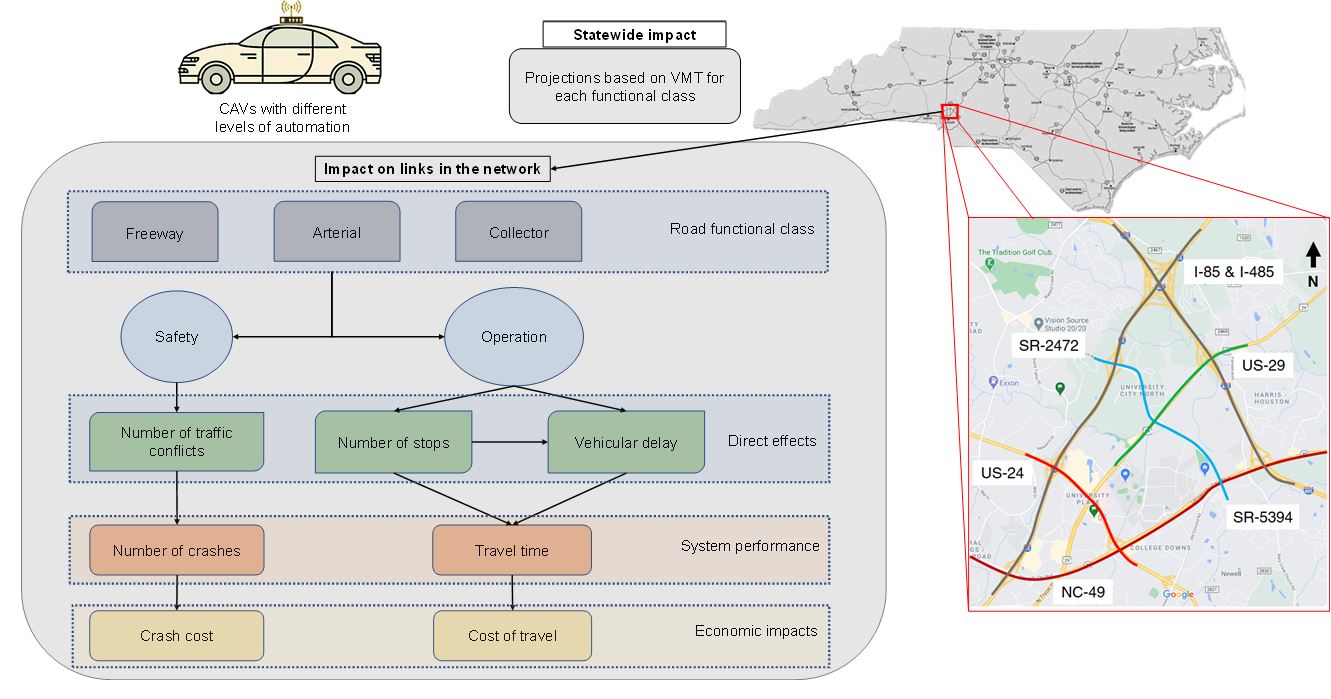Operational and Economic Impacts of Connected and Automated Vehicles

Connected and automated vehicle (CAV) technology is advancing at a rapid pace and is expected to evolve further in the foreseeable future. As the widespread deployment of CAVs is becoming more realistic in the coming years, it is important to assess the operational, safety, and economic impacts due to different penetration rates of CAVs, over time. This will help agencies like NCDOT to proactively plan, design, build, operate, and maintain their transportation network. Therefore, the objectives of this project are: 1) to evaluate the operational and safety performance of the transportation network at various penetration rates of CAVs, and 2) to assess the impact of CAVs on the economy.
The Research Team has developed a simulation-based methodological framework to evaluate the operational, safety, and economic impacts of CAVs. A 17-mile road network in the city of Charlotte, North Carolina, was chosen for microscopic modeling using PTV VISSIM traffic simulation software. The developed network includes freeways, arterials, collectors, and local roads. Key indicators like driver behavior parameters, acceleration/deceleration profiles, time lead, space headway, etc. were adjusted to mimic CAVs behavior in the simulation environment.
Several possible scenarios of significance to the state of North Carolina with different levels of autonomy and market penetration rates are identified. The operational, safety, and economic analysis are being performed separately for different functional classes and different horizon years, which will be used to generate statewide estimates. The findings from this study contribute to the ongoing discussions about the type and magnitude of potential impacts of CAVs on operational and safety performance. They also highlight possible effects that could drive changes in our economy and society, and assess the potential benefits/challenges of CAV penetration on transportation infrastructure operations and investments.

